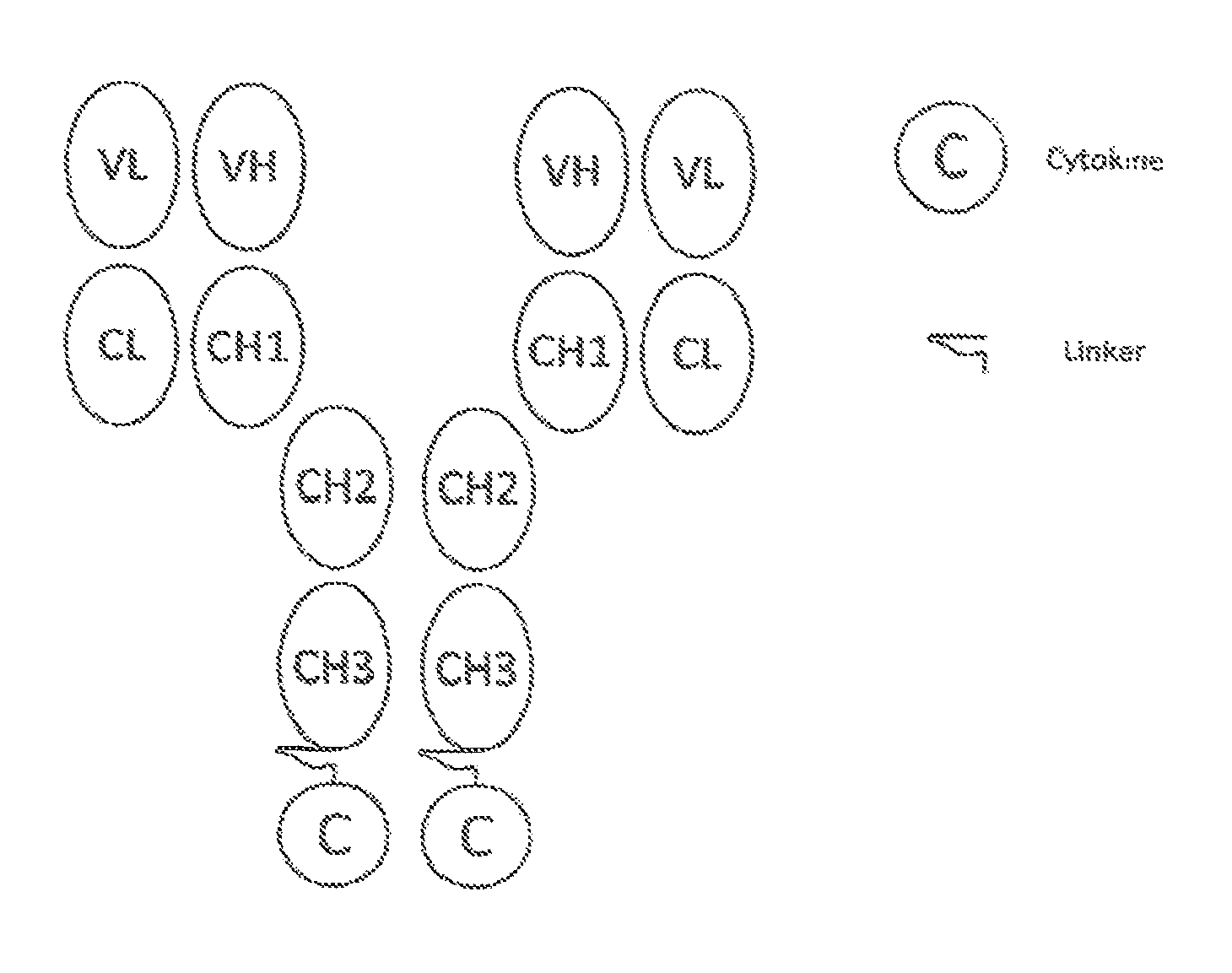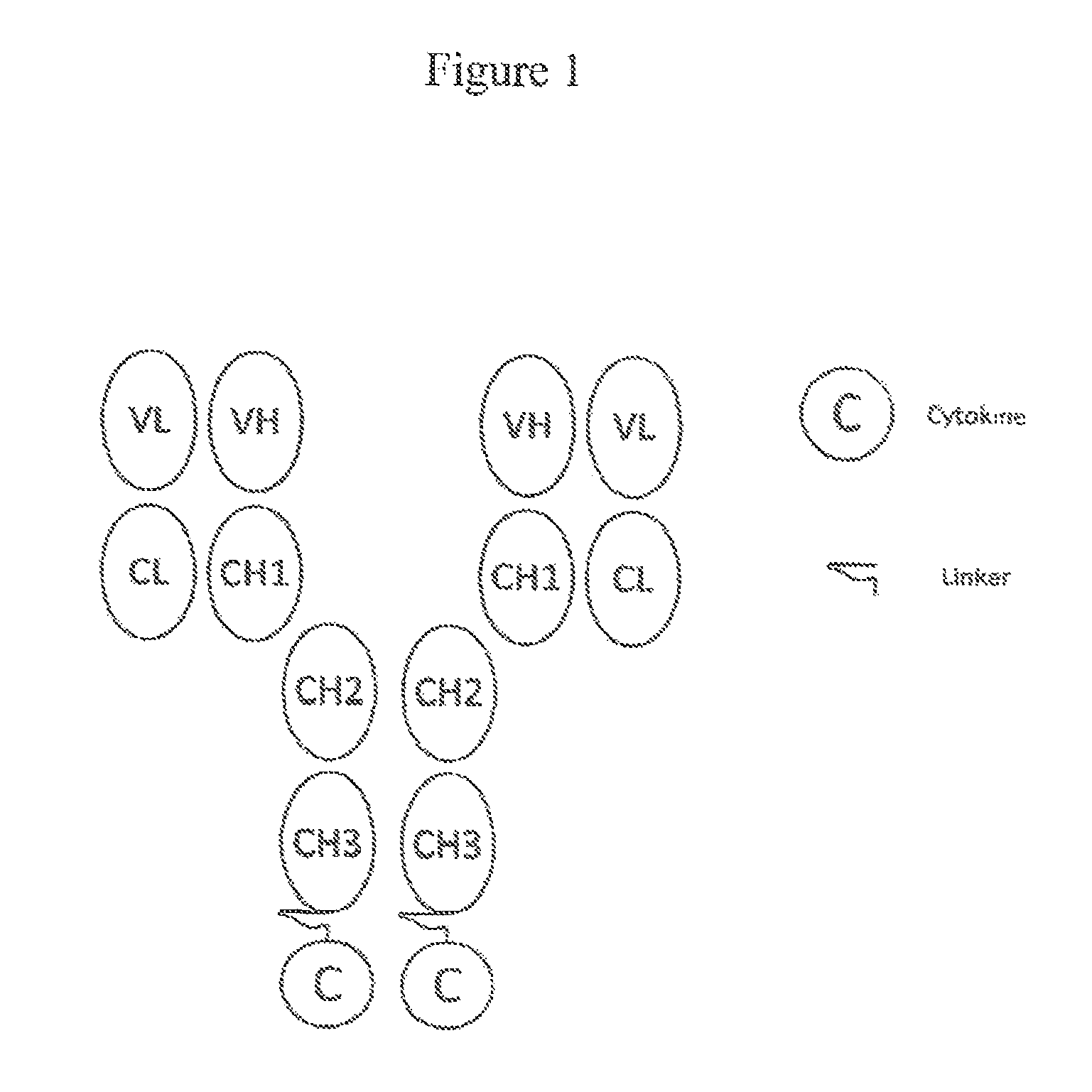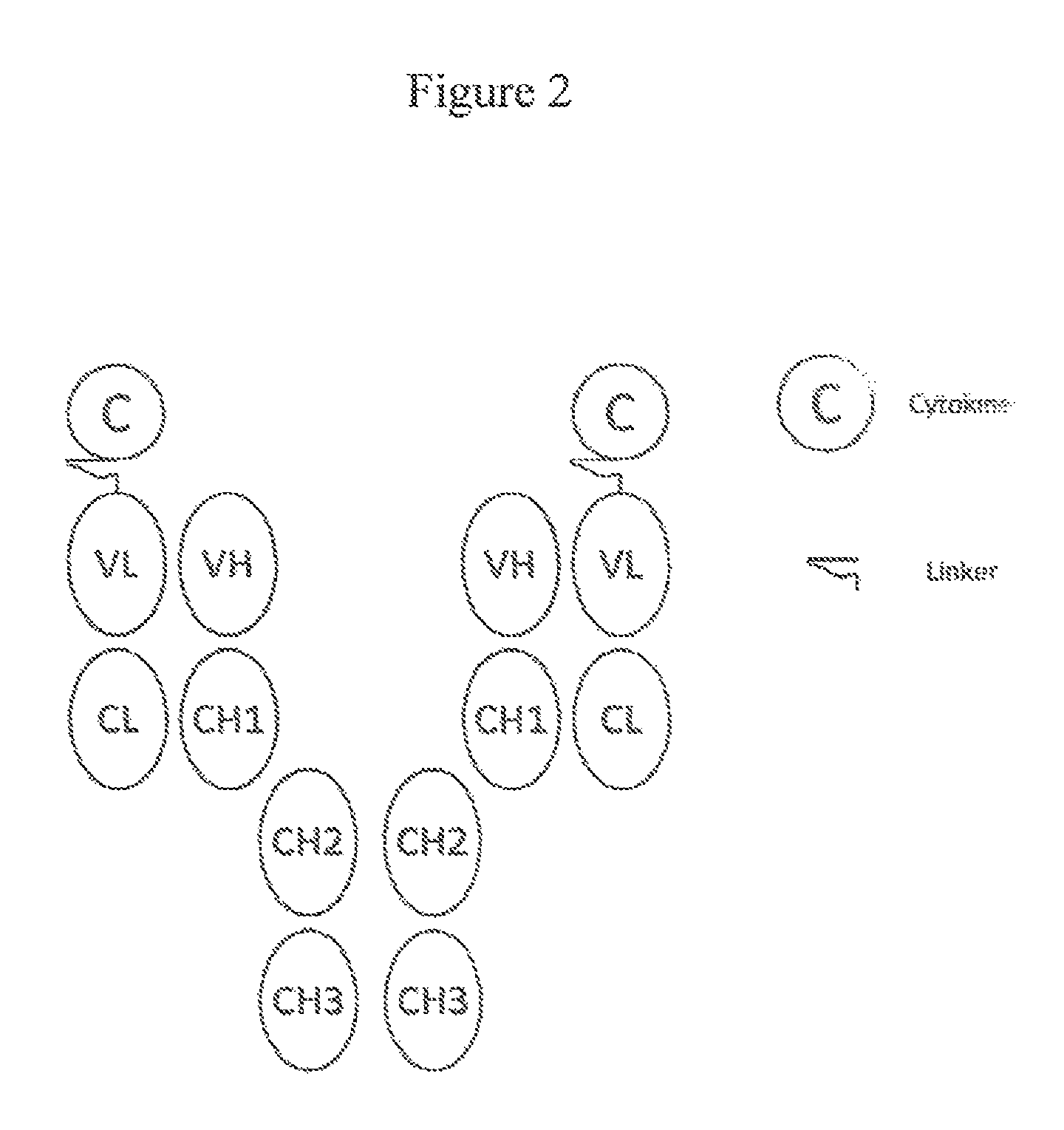Engineered TAA antibody-TNFSF member ligand fusion molecules
a technology of fusion molecules and tnfsf, which is applied in the field of gene engineered fusion molecules, can solve the problems of limited vivo use of cd95l, insufficient potency, and inability to effectively fight cancer, and achieves superior efficacy and safety profile, reduces the systemic toxicity of tnfsf member ligands, and is more effective.
- Summary
- Abstract
- Description
- Claims
- Application Information
AI Technical Summary
Benefits of technology
Problems solved by technology
Method used
Image
Examples
example 1
[0088]Various engineered fusion molecules comprising one of the various antibodies which can target tumor cells (as described herein) fused to one or more of the various biologic moieties (or mutants thereof) capable of inducing apoptosis in tumor cells (as described herein) can be prepared using the recombinant DNA process for synthesis of a fusion molecule described in the example below.
[0089]In this example, the FDA-approved anti-CD20 antibody Rituximab (IDEC C2B8; RITUXAN®; ATCC No. HB 11388), the TNFSF member ligand TRAIL (e.g., Wiely et al., Immunity, 3:673-682, 1995), and a proteolysis-resistant linker (as described in U.S. Publication 20100172868 (Morrison et al.)) was used in the preparation a fusion molecule designed as depicted in FIG. 1. The preparation can be generally described as follows: 1) the variable regions for anti-CD20 antibody are amplified and cloned into expression vectors for the production of chimeric antibodies with human kappa light chains and gamma 1 he...
example 2
[0091]This example describes assays to be used for systematically testing the resulting fusion molecules at varying doses in vitro to identify the ability of the fusion molecules to bind the TNFSF member ligand / receptor complex on non-targeted cells (“off-target”); b) the ability of the fusion molecule to bind cells expressing the antigen targeted by the Ab (“on-target”); c) the TNFSF member ligand bioactivity of the fusion molecules on non-targeted cells; d) the antiproliferative activity of the fusion molecules on targeted cells; and e) the ability of the fusion molecule to induce apoptosis. Again, the example below is specific to the anti-CD20-TRAIL fusion molecule described in Example 1, but the assays can be easily adapted to the other antibodies and biologic moieties taught herein.
[0092]Flow Cytometry Analysis for mAb-TNFSF Ligand Fusion Binding to Specific Cells
[0093]To determine “off-target” and “on-target” binding ability of the fusion molecules the Daudi cell line, which e...
example 3
[0104]This example describes in vivo studies that can be used to assess the anti-tumor activity of the fusion molecules which demonstrated improved therapeutic margin in the in vitro assays (Example 2) to determine efficacy in treating in vivo tumors. Again, the anti-CD20-TRAIL fusion molecule serves as the example.
[0105]Mice (groups of 4) were injected subcutaneously with 5000 CD20-expressing cancer cells on day zero. On days 1, 2 and 3 they were treated intravenously with hepes buffered saline solution (HBSS) or 0.4 μg, 2 μg, or 10 μg of anti-CD20-TRAIL fusion molecules and tumor growth monitored for 20 days.
[0106]All of the articles and methods disclosed and claimed herein can be made and executed without undue experimentation in light of the present disclosure. While the articles and methods of this invention have been described in terms of preferred embodiments, it will be apparent to those of skill in the art that variations may be applied to the articles and methods without d...
PUM
| Property | Measurement | Unit |
|---|---|---|
| full-length | aaaaa | aaaaa |
| length | aaaaa | aaaaa |
| pharmaceutical composition | aaaaa | aaaaa |
Abstract
Description
Claims
Application Information
 Login to View More
Login to View More - R&D
- Intellectual Property
- Life Sciences
- Materials
- Tech Scout
- Unparalleled Data Quality
- Higher Quality Content
- 60% Fewer Hallucinations
Browse by: Latest US Patents, China's latest patents, Technical Efficacy Thesaurus, Application Domain, Technology Topic, Popular Technical Reports.
© 2025 PatSnap. All rights reserved.Legal|Privacy policy|Modern Slavery Act Transparency Statement|Sitemap|About US| Contact US: help@patsnap.com



